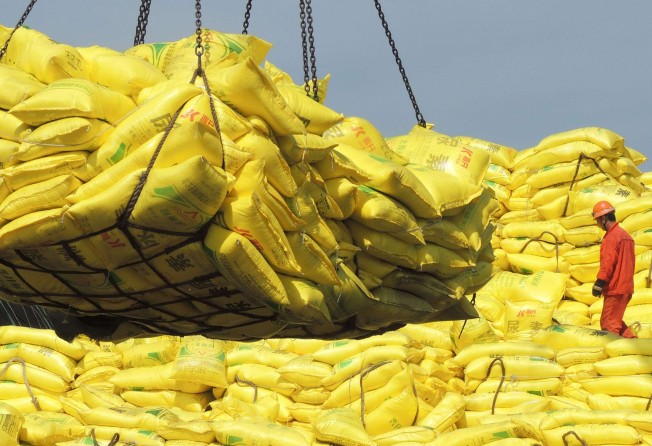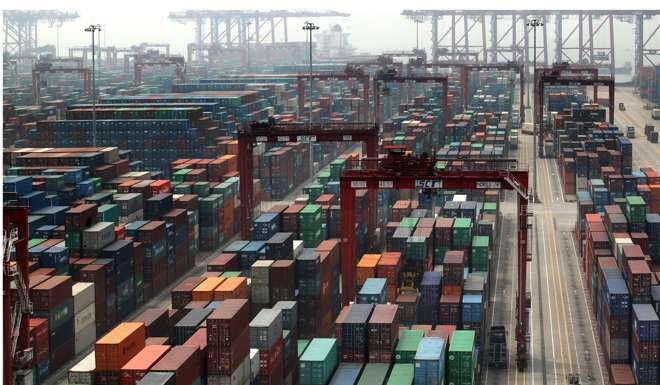China holds the key to meaningful recovery from the present zombie state of the world economy
Country at the heart of the [global trade] rule-making process, while the US is not even at the table, and it seems neither Trump nor Clinton greatly care

This week’s gloom-filled columns, fuelled by pessimistic IMF and World Bank reports on the state of the world economy, the fragile state of the world’s banking system as Deutsche Bank’s crisis creates shock waves, and anxiety over the divisive potential of Brexit in Europe and Trump in the US, leads me to a thought that needs to be addressed: to what extent is all this simply a reflection of a fundamental restructuring of the global economy that is now in progress, with China likely to be the principle long-term beneficiary?
In short, the prosperity and the massive and generous welfare states that have been built in the US and Europe over the past century are based on the ability of a minority (the 600 million of so people who live in Europe and North America) to have access to cheap resources and low-priced consumer goods from a developing world that must remain necessarily poor in order to continue to provide such goods and resources at prices we can afford.
This mercantilist paradigm has prevailed for more than a century and has underpinned the west’s affluence and the colossal and expensive welfare states that were built and have come to be taken for granted.
Its unravelling – marked over the past two decades by rising affluence and consumption in developing economies like China and the emergence there of skills and technologies that directly attack the affluence-generating “natural advantages” that have for so long been taken for granted in the rich west – sits at the heart of all that is happening now.
Grave as the 2008 financial crash was in its own right, it was simply a catalyst accelerating a trend already long in progress.
Wading through the thousands of pages of commentary about the IMF’s World Economic Outlook and the Fiscal Monitor that tracks the astonishing explosion of debt worldwide (it now amounts to a mind-numbing US$152 trillion – more than twice the size of the global economy) a few simple conclusions emerge:
● The emergency quantitative easing (QE) policies unleashed by Central Banks across the developed world may have played an important part in preventing what otherwise would have been a total meltdown, but in their own right they can never provide foundations for a recovery;
● For that to happen, we need a recovery in economic growth and governments to use fiscal policies to provide countercyclical stimulus, perhaps most valuably in building new, or repairing aged infrastructure;
● Nine years after the 2008 US mortgage-backed financial sector crash, the QE policies are now more part of the problem than they are part of the solution, by artificially bloating the property and equity markets and hobbling governments with debts they will take decades to pay down or write off;

● China is a problem in so far as its locomotive contribution – critical through a number of years in which the US and European economies have contributed little to global growth – has been weakened by an internal restructuring needed to reduce its reliance on state-funded export manufacturing and to rely more heavily on domestic consumption underpinned by higher skills and higher household incomes;
● The severity of the 2008 crash has consistently been underestimated, but is likely to persist for several years more (perhaps getting worse in Europe), and is beginning to generate troubling political backlashes like Brexit and Trump which are likely to get worse, and which have the potential to inflict new serious harm on the global economy – not least in the form of trade protectionism, and counterproductive constraints on skills mobility.
For clear evidence of the fundamental global economic rebalancing that is now taking place, it is interesting and timely to look at the catastrophically becalmed Trans-Pacific Partnership (TPP), which President Obama has in vain sought to ratify before he is succeeded by Trump or Clinton – both of whom will certainly walk away from the 15,000-page pact embracing 12 Pacific economies, but excluding China.
Recall President Obama’s comments in January last year: “China wants to write the rules (of trade) for the world’s fastest-growing region. That would put our workers and our businesses at a disadvantage. Why should we let this happen? We should write those rules.”
By failing to ratify the TPP the US cedes the right to set trade and economic rules in the Asia-Pacific
Obama was right. By failing to ratify the TPP the US cedes the right to set trade and economic rules in the Asia-Pacific. Ashton Carter, Obama’s Defence Secretary, underscored the strategic as well as economic importance of the TPP when he said four months later: “Passing TPP is as important to me as another aircraft carrier.”
The now almost inevitable failure of the TPP means that the China-Asean-led Regional Comprehensive Economic Partnership (RCEP) – which includes Australia, New Zealand, Korea, India and Japan, but excludes the US – is due to be completed by the end of the year, and will provide the primary architecture for driving trade liberalisation in the Asia-Pacific.
As a Financial Times journalist wrote last week: “Not only would (RCEP) exclude the US, but it would also include worse safeguards for intellectual property, internet freedom, workers’ rights, wildlife and the environment.”
Most important, China is at the heart of the rule-making process, while the US is not even at the table. Grimly, it seems that neither Trump nor Clinton greatly care.
To be fair there is one glimmer of hope of a middle-ground outcome to emerge on trade liberalisation in Asia, even if the RCEP gets passed and the TPP dies.
That is what is called the Free Trade Area of the Asia-Pacific (FTAAP) which is currently being nurtured inside the 21-economy Asia-Pacific Economic Cooperation (APEC) group. Here, both the US and China are working actively together, with a framework likely to be agreed at the Lima APEC Leaders’ Meeting in November.
The lesson from these developments is that, like it or not, China is in future going to be at the heart of all meaningful trade agreements, just as it is going to be at the heart of a meaningful recovery from the present dreadful zombie state of the world economy.
It is key, not as a threat but as a locomotive and even as a fresh-eyed rule drafter. The IMF and the World Bank recognise that. The sooner the US does the same, the better.
David Dodwell researches and writes about global, regional and Hong Kong challenges from a Hong Kong point of view